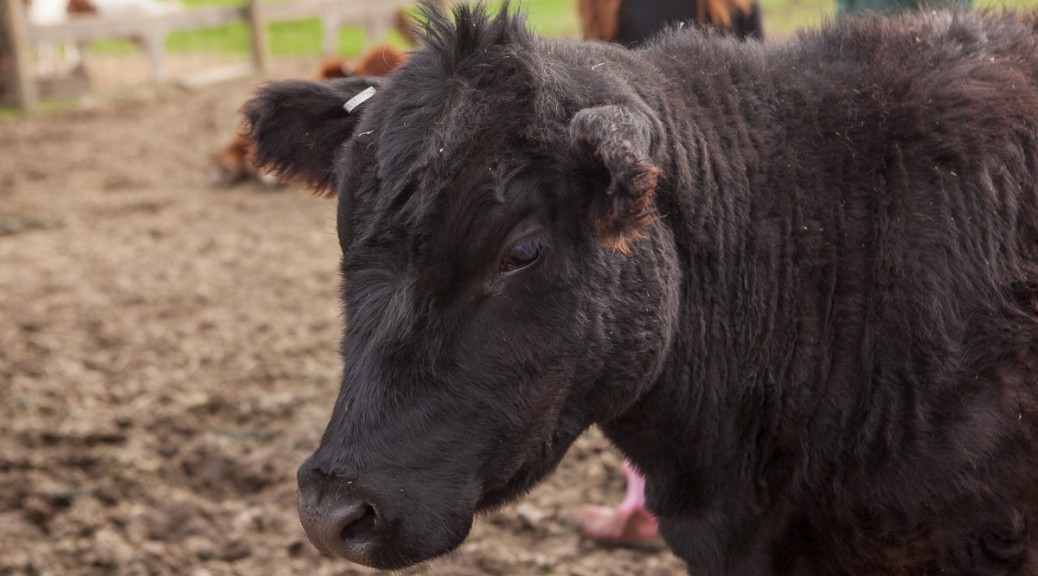[Image: Sarah Tulsi, a cow living at PreetiRang Sanctuary.]
One of the benefits of getting all of my television from the Internet is not having to sit through as many commercials. When I do watch conventional television, inevitably I see ads extolling the virtues of eating the flesh, eggs, and milk of my fellow animals. This was especially hard to take when staying at a hotel in Seattle after enjoying three days of all-vegan fare at last month’s Intersectional Justice Conference.
Returning from a breakfast buffet that included the sliced and cooked flesh of cows and pigs, I turned on the TV and saw an ad for “Real milk vs almond milk,” which featured a child in a spelling bee contest attempting to spell the word “lecithin,” an emulsifier used in some commercial almond milks. Another child then easily spelled the word “milk”, which was defined on screen as “milk, n., like, from a cow.”
https://youtu.be/oTS1RIZboqU
I suppose it’s good news that the dairy industry is feeling threatened enough by the sales of non-dairy beverages to spend advertising time and money taking them on. But it has always irritated me to hear milk stolen from forcibly-impregnated cows (and goats) described as “real,” while liquid blended and strained from water and nuts, soybeans, or other plants is considered, at best, an “alternative.”
Ziggy and I make soy and nut milks at home with water and soy/nuts only, and when we do buy commercial non-dairy milks, we seek out brands with no additives. Cow’s milk sold in the USA, in contrast, is hardly ever free of additives; by the time it hits store shelves, it has been pasteurized and processed to add vitamins (which we can get directly from plants and sunshine), and may contain traces of growth hormone and antibiotics. Perhaps the child at the “ingredient spelling bee” should have been asked to spell “penicillin.”
I heard “real milk” referred to again when we went to lunch at one of Seattle’s many all-vegan restaurants (Plum Bistro, highly recommended). A customer at a table near ours asked the waitperson if they had “real milk” or “just” soy milk. It reminded me of a time a friend insisted that “vegan ice cream” made no sense, because cream had to come from a cow. I wish people would refer to animal milk products as “dairy” instead of stigmatizing plant-based foods as somehow illegitimate.
As I wrote in the DxE blog back when I was active with that group, the idea that cow’s milk is a normal and appropriate substance for humans to consume is a Eurocentric notion that ignores the fact that the majority of people on Earth—primarily people of color—cannot digest lactose properly after infancy. Of all animal products, I’m convinced that cow’s milk is the worst for both human and non-human animals (other than the baby cows it is meant for), in terms of health as well as ethics. Dairy farming involves terrible suffering and death, even on organic, “free-range,” and so-called “humane” farms. This is a large part of why I avoid advocating for vegetarianism, “Meatless Mondays,” or anything else that implies that eating “meat” is the primary problem with animal agriculture.
Let’s stop thinking of non-dairy milks as “alternatives” to or “substitutes” for animal milks, and just recognize them as another option in the vegan grocery cart. Plants are as real as real food gets.

One thought on ““Real” milk, real suffering”
Comments are closed.